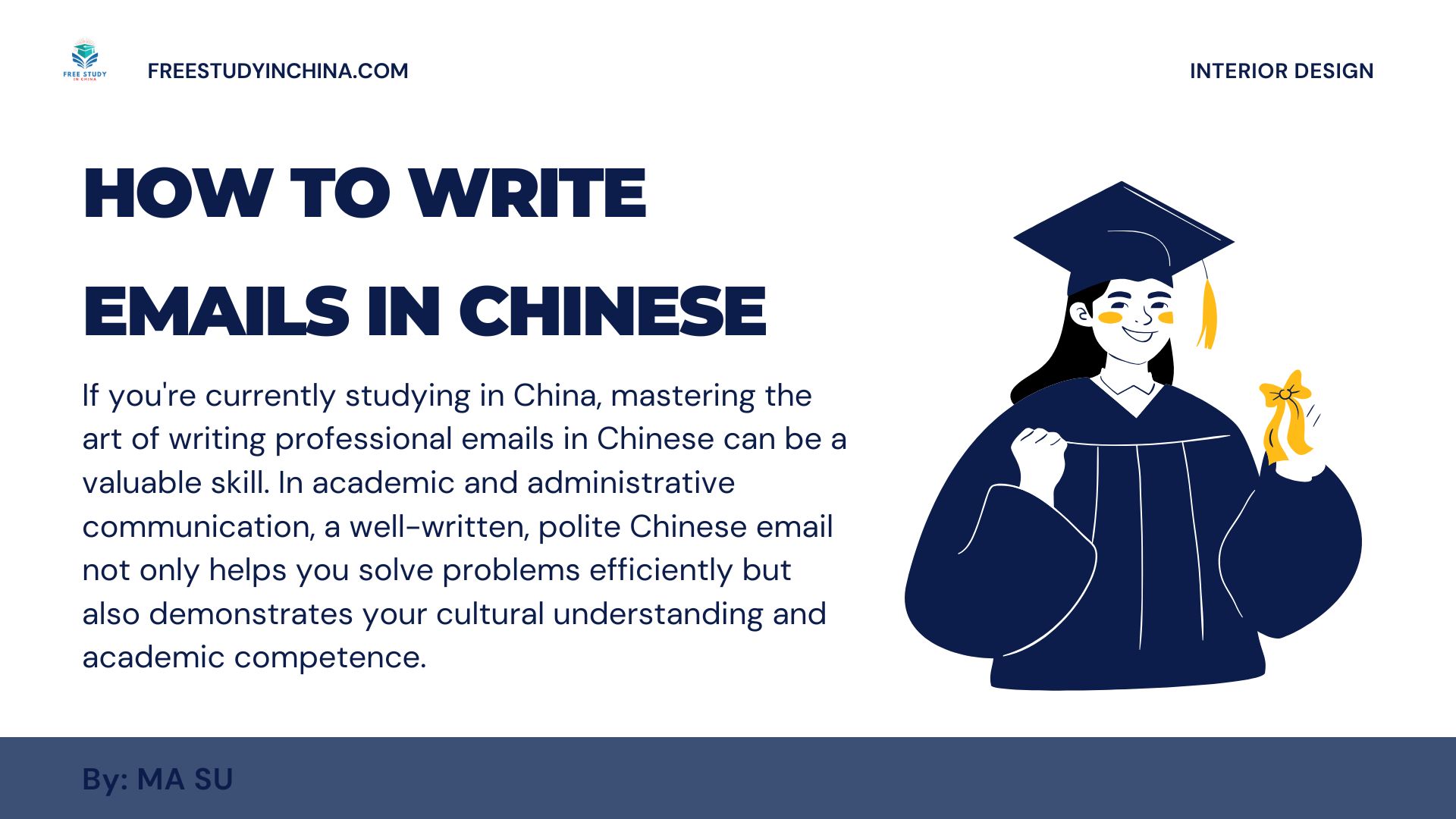Dear Followers,
If you’re currently studying in China, mastering the art of writing professional emails in Chinese can be a valuable skill. In academic and administrative communication, a well-written, polite Chinese email not only helps you solve problems efficiently but also demonstrates your cultural understanding and academic competence.
This guide offers practical tips on how to write emails in Chinese—a must-read for every international student in China.
I. The Basic Structure of a Chinese Email
A standard Chinese email usually includes the following components:
1. Subject Line
Keep it concise and clear. Your subject should directly state the purpose of the email.
Examples:
- “关于××课程的疑问” (Questions about XX Course)
- “论文指导预约申请” (Request for Thesis Supervision Appointment)
2. Salutation
Use formal greetings, such as:
- “尊敬的×××教授” (Respected Professor XX)
- “×××老师您好” (Hello, Teacher XX)
Even if you usually call your professor by their English name in class, always use formal Chinese titles in emails. If unsure about their title, “老师” (Teacher) is a safe and respectful choice.
3. Body of the Email
Organize the content into clear paragraphs. Keep your tone polite and your message brief—avoid long-winded expressions.
4. Closing Phrase
End your email with a polite conclusion, such as:
- “此致敬礼” (With best regards)
- “谢谢您的指导” (Thank you for your guidance)
5. Signature
Include your full name, student ID, and contact information so that the recipient can easily identify and reply to you.
II. Writing Tips for Chinese Emails
1. Proper Salutations and Polite Expressions
Start your email with respectful language. Phrases like “冒昧打扰” (sorry for the intrusion) or “恳请指教” (I humbly ask for your guidance) make a good first impression.
Remember: tone matters. A respectful tone reflects not just your manners but also your understanding of Chinese communication culture.
2. Clear Language and Complete Format
In the body, strike a balance between conciseness and courtesy.
- Begin with a polite opening
- Go straight to the point
- Conclude with thanks and respect
If you attach files such as assignments or essays, always mention them clearly in the text.
3. Logical Structure and Bullet Points
Use a “General–Specific–General” format:
- Start with a brief explanation of your main concern
- Elaborate in bullet points or short paragraphs
- End with your request or summary
This structure is easy for Chinese professors to follow and ensures your email is well-organized and to the point.
4. Appropriate Formal Language
Avoid being overly direct. Opt for respectful and modest wording.
Also, match your tone to the occasion:
- For course inquiries, be precise and focused
- For thesis supervision, show preparation
- For leave or extension requests, provide reasons clearly and respectfully
III. Sample Email in Chinese
Here’s a simple sample format to reference:
标题: 论文指导预约申请
尊敬的×××教授:
您好!冒昧打扰。我是××学院的研究生×××(学号××××××),目前正在准备我的硕士论文,研究方向为×××。
我希望能就我的论文初步框架与您进行一次指导交流,不知您近期是否有空?如您方便,请问本周三下午或周五上午是否适合?
附件中附上我的论文提纲,烦请您查收。
此致
敬礼!
×××
学号:××××××
联系电话:××××××××××

